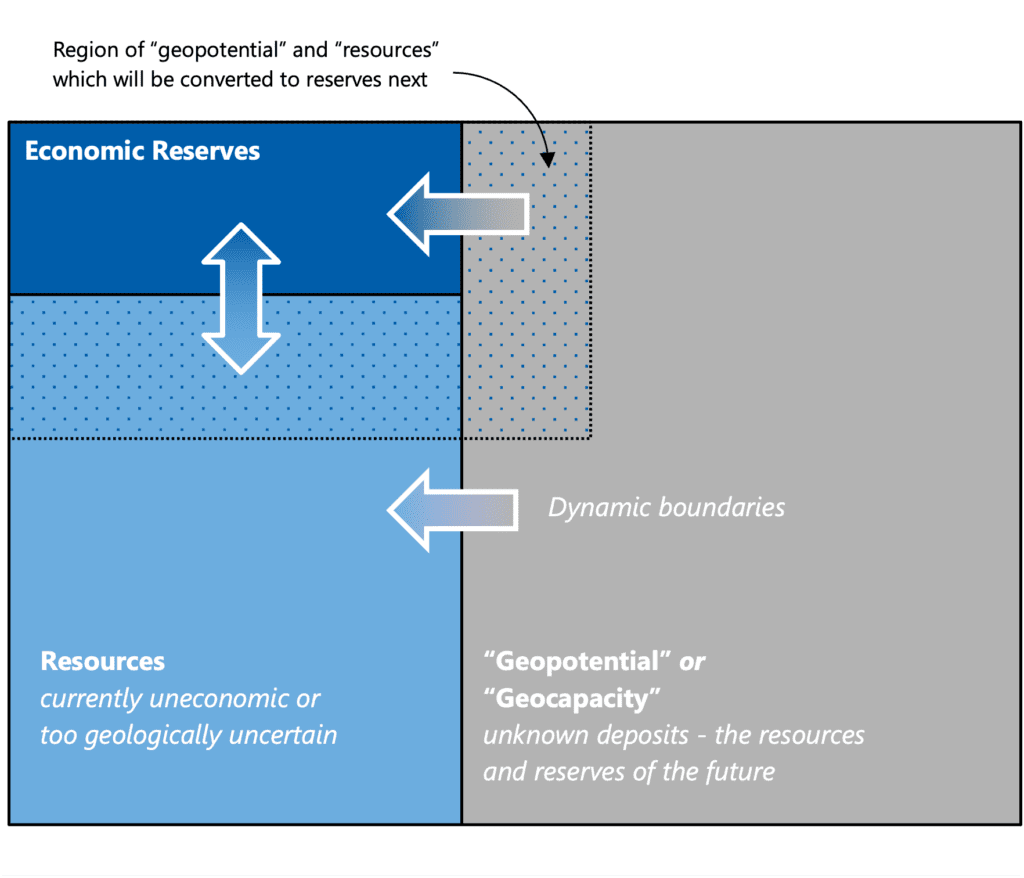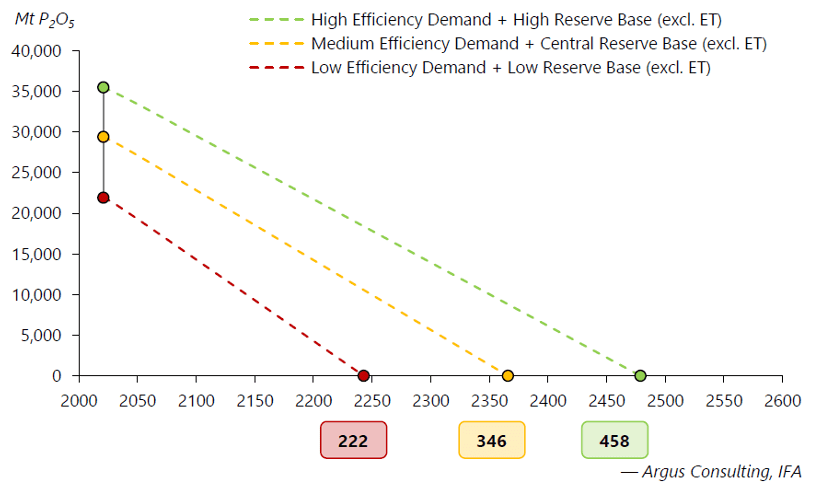Three things to know about world phosphate rock resources and reserves
In this blog, IFA's Deputy Director General, Patrick Heffer and Matthew Lisley, Manager, Consulting Services at Argus Media, summarize the main messages of the latest assessment of world phosphate rock resources and reserves.
Firstly, what are phosphorus and phosphate rock and why was this study carried out?
Phosphorus is one of the three macronutrients used in largest quantities by plants, and it has no substitute. Hence, it is essential for food production.
Phosphate rock is used as the main raw material to produce phosphate fertilizers, an important source of phosphorus for productive and healthy crops. It is also used to manufacture feed additives and some industrial products, including the fast rising market of lithium iron phosphate (LFP) batteries for electric vehicles. The most popular phosphate fertilizers derived from phosphate rock include ammonium phosphates, superphosphates and NPK fertilizers. In 2020, world phosphate fertilizer consumption was estimated at about 49 million tonnes (Mt) P2O5[1] (IFASTAT).
Similar to any raw material, a key component of sustainable phosphorus management is properly understanding the status of world phosphate rock deposits. The previous most comprehensive assessment on the topic was the report on World Phosphate Rock Reserves and Resources published by the International Fertilizer Development Center (IFDC) in 2010. In its report, IFDC concluded that reserves of phosphate rock suitable for processing into phosphate derivatives would last hundreds of years.
The International Fertilizer Association (IFA) and its members felt that, a dozen years later, an update to this study was necessary, and they commissioned Argus Consulting Services to perform that assessment, based on best available data and using a robust methodology.
1. Global phosphate rock resources are assessed at over 300 billion tonnes
There are three main forms of phosphate deposits: sedimentary marine phosphorite, igneous apatite and guano. Today, sedimentary deposits account for three-fourths of the world phosphate rock output, igneous deposits for one-fourth, while guano deposits are negligible.
The grade and quality of a deposit is important to consider because it determines its suitability and costs of processing. Deposits tend to be classified on the basis of their potential: can they be mined with current technology, and at current prices? The terms “geopotential”, “resources”, “reserve base” and “reserves” help classify deposits taking their potential into account (See Box). For the purpose of this study, aimed at addressing the question of long-term scarcity, the key metrics are resources and the reserve base.
| A robust assessment starts with clear definitions
“Resources” can be seen as a theoretical measure of whether enough potentially extractable P2O5 exists on Earth and the “reserve base” represents the subset of that resource that meets minimum requirements for current mining and beneficiation practices. “Reserves” include an economic component, and represent a snapshot of the feasibility of given extraction at a given time.
Resources are only a small portion of the “geopotential”, which includes deposits that are currently undiscovered, i.e. the resources of the future. |

The “Total Resource Box” |
The study estimates global phosphate rock resources of 342 gigatonnes[2] (Gt), with a range from 270 to 420 Gt, containing 65 Gt P2O5 (45-88 Gt P2O5). These figures are reported in-situ, representing the mass of rock in the ground, without any mining or beneficiation losses applied. Both ecologically-sensitive and speculative resources have been excluded from this total.
Of these resources, the study estimates a reserve base of 189 Gt (148-211 Gt) containing 36 Gt P2O5 (26-48 Gt P2O5), representing the in-situ ore volumes that are technically recoverable using traditional technologies. Including emerging technologies that allow lower grade phosphate rock to be processed, the reserve base is estimated at 219 Gt (171-232 Gt), containing 39 Gt P2O5 (27-48 Gt P2O5) in-situ ore.
Economic reserves are estimated at 83 Gt (52-92 Gt) containing 21 Gt P2O5 (12-24 Gt P2O5).

Current estimates of resource, reserve base and economic reserves for 2021
2. Technically recoverable phosphate is projected to last more than three centuries
Calculating the lifespan under different consumption scenarios is the most meaningful metric to provide context to the resource and reserve base estimates.
World phosphate fertilizer consumption fluctuated between 42 and 49 Mt P2O5 between 2010 and 2020 according to IFASTAT. IFA further projected that world phosphate fertilizer demand would increase to 63-72 Mt P2O5 by 2050 depending on the agricultural and nutrient management scenarios. Accounting for non-fertilizer uses and processing losses, the study projects annual phosphate rock production requirements of between 78 and 100 Mt P2O5 in 2050. Total demand is assumed to plateau beyond 2050.
Combining the central reserve base estimate with the medium efficiency demand scenario leads to a calculated lifespan of 346 years, with a range from 222 to 458 years, when traditional techniques only are taken into account. By including material that is technically recoverable with emerging technologies, this lifespan increases by 9 years (4-13). All alternative demand scenarios, including higher than expected demographic growth or fast development of LFP battery production, result in a calculated lifespan of the reserve base of at least 300 years considering the central reserve base estimate.

Depletion profile of the reserve base (including traditional technologies only)
If the same calculation is done for the total available global resources of 342 Gt (65 Gt P2O5), excluding speculative resources and the currently unknowable geopotential, and assuming advancement in technology and all the in-situ phosphate were able to be accessed (i.e. 100% mining recovery and 100% beneficiation recovery), we could expect a lifetime of 765 years (455-1,138).
3. Sustainable management of phosphorus remains a top priority
Ample resources and reserves are not a justification for unsustainable phosphorus management. There is a need to further improve mining and processing efficiency, to use more circular approaches and recover and recycle phosphorus from various waste streams, and to help farmers get more crop and grass per unit of P2O5 they apply to their cropland and pastures. These interventions will all contribute to increasing the lifespan of phosphate rock deposits. They will also help improve crop yield and farming profitability, and minimize phosphorus losses to water bodies and related eutrophication of aquatic systems.
In its conclusion, the study notes that, owing to absence of imminent threat to the global supply of phosphorus for agricultural production and the much higher sense of urgency to act on climate, attention should be focused on lowering the industry’s carbon footprint, rather than any perception of global phosphate scarcity.
[1] P2O5 is the unit most commonly used by the industry for measuring the nutrient content of phosphate-containing products.
[2] 1 gigatonne = 1 billion tonnes

